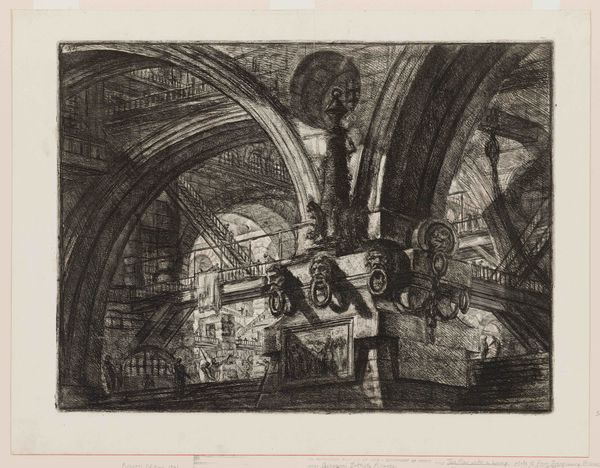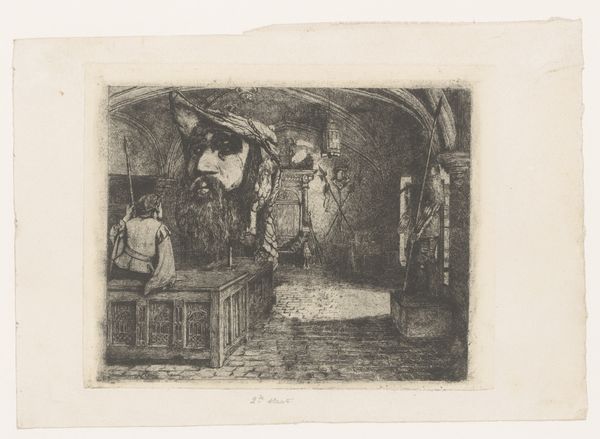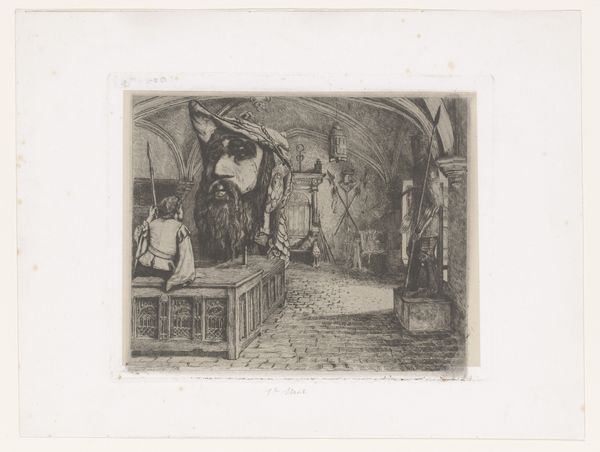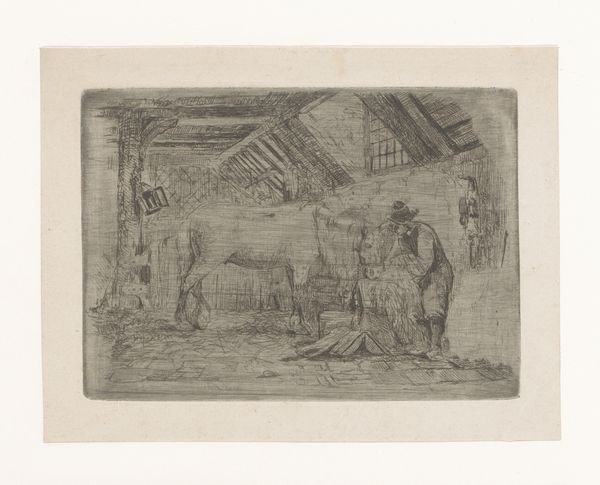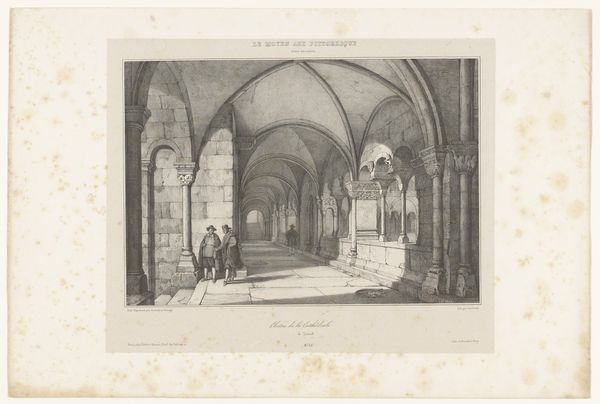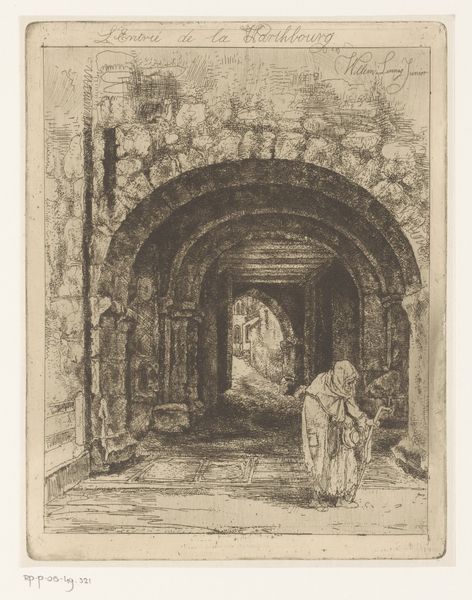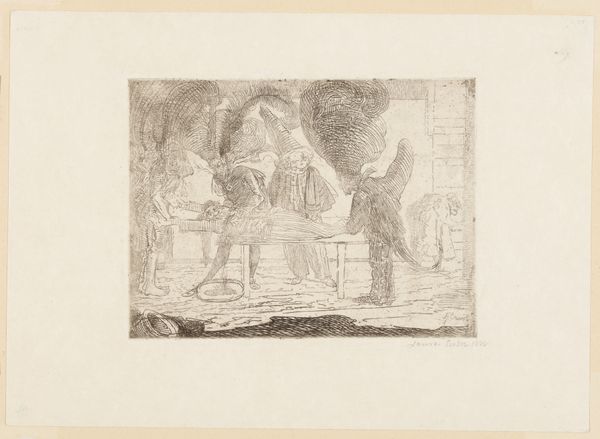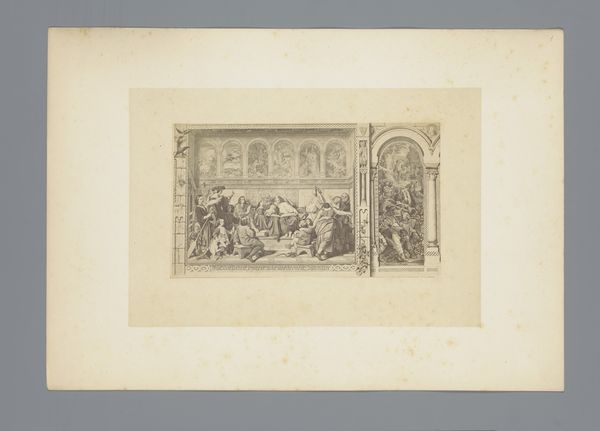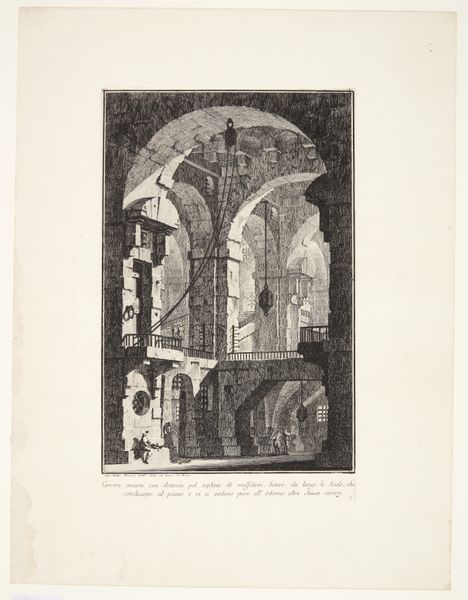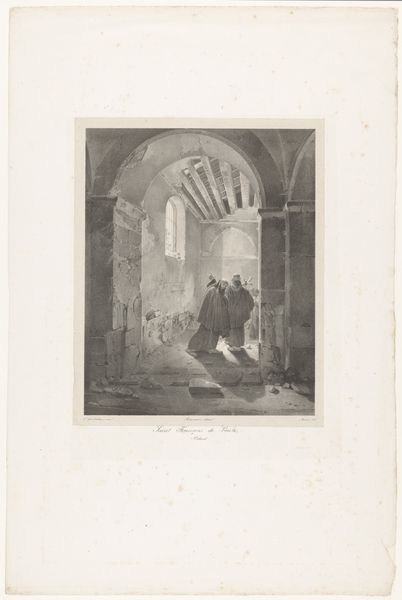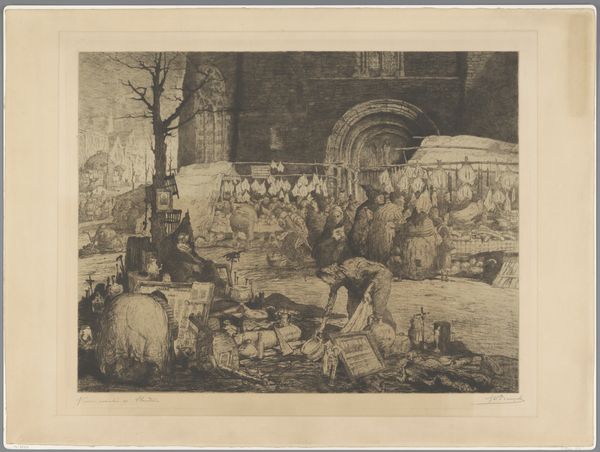
print, etching, engraving
#
baroque
# print
#
etching
#
form
#
line
#
cityscape
#
history-painting
#
engraving
Dimensions: 16-1/8 x 21-1/2 in. (41.0 x 54.6 cm)
Copyright: Public Domain
Editor: This is Giovanni Battista Piranesi's "The Pier with a Lamp," from 1749. It's an etching and engraving. I’m struck by how intensely dark the image is, and I'm curious about that dramatic contrast in light and shadow. What draws your eye when you look at this piece? Curator: Well, for me, the most interesting aspect is the material process. Piranesi was a master printmaker. We often overlook the sheer labor and skill involved in creating such intricate detail using etching and engraving techniques in the 18th century. Think about the workshops, the apprentices involved, the materials—copper plates, acids, inks, papers… It's a complex system of production, mirroring the industrializing world emerging around him. Editor: That's fascinating! It shifts my perspective to think about it not just as a singular artistic vision, but also a collaborative product. What about the "Pier" itself? Does the architectural setting have any significance related to production? Curator: Absolutely! Consider Piranesi’s interest in Roman antiquities. His prints weren’t just aesthetic objects; they were a form of archaeological documentation and even, dare I say, marketing! He was selling an idea of Rome, a visual commodity, to Grand Tour travelers hungry for souvenirs. These prints became a crucial medium for circulating and consuming architectural ideas, which had real economic consequences for the city. Editor: So the very act of creating and distributing these prints had a tangible effect on the landscape he was depicting? Curator: Precisely! And that pier, likely imaginary, becomes part of a grand theatrical stage designed to sell both dreams of the past and souvenirs for the present. Think about the socio-economic structures that supported and sustained such large projects. Piranesi’s labor helped in shaping perceptions and preserving—or creating—an idea of Italian patrimony, an example still at play in popular tourist destinations nowadays. Editor: This has really changed how I see the artwork. Thanks! I hadn't considered how deeply embedded the image is within material processes and economic structures. Curator: That is precisely what I find compelling. By tracing the means of production and consumption, we uncover the intricate relationships between art, labor, and the making of history itself.
Comments
No comments
Be the first to comment and join the conversation on the ultimate creative platform.
